Jeremy Bradford and a friend were walking through downtown Seattle one summer night in 2011, looking for a place where they could share the contents of the baggie in Bradford’s pocket, when they ran into a man who told them about a spot under the freeway. A narrow trail led through a thicket of blackberry brambles to a small clearing. Eight or nine people were sitting around on salvaged chairs and mattresses, smoking cigarettes and talking.
Bradford didn’t feel like he belonged there. “You have two types of people in the crack world -- crackheads and smokers,” he said. He still thought of himself as a smoker, someone with too much self-respect to live in the weeds under a highway. But there he was. He took a seat on a mattress, held a flame to the end of a thin glass tube and inhaled.
In another life, Bradford supervised 13 soldiers as a corporal in the Marines, and later sold good suits in the men’s section of a department store. He was “a preppy black guy in Armani,” he said, a man who took pride in his appearance. But in the decade after he turned 29, he lost 30 pounds and often went days without a shower. He lived on friends’ couches, in cheap motel rooms, and sometimes on cardboard mats on the sidewalk. There were months when he managed to avoid smoking crack, but then he’d run into someone he knew from the streets. Along the way, he’d fathered a child with a woman who lived in the house where he bought his drugs, and he’d watched the state and then his parents take custody of his daughter.
A few months after that night under the freeway, the cops found their way to the hidden spot. By then, Bradford had claimed one of the mattresses as his own. He had been sleeping there every night, hoping to avoid what now seemed unavoidable: another trip to the county jail, where he’d already been locked up more than 20 times. Sometimes the police had booked him for a night or two, sometimes longer. But this time, instead of putting him in jail, they invited him to participate in a radical experiment.
For Bradford, it represented another chance. For the cops, it was part of a difficult process that forced them to break habits of their own.
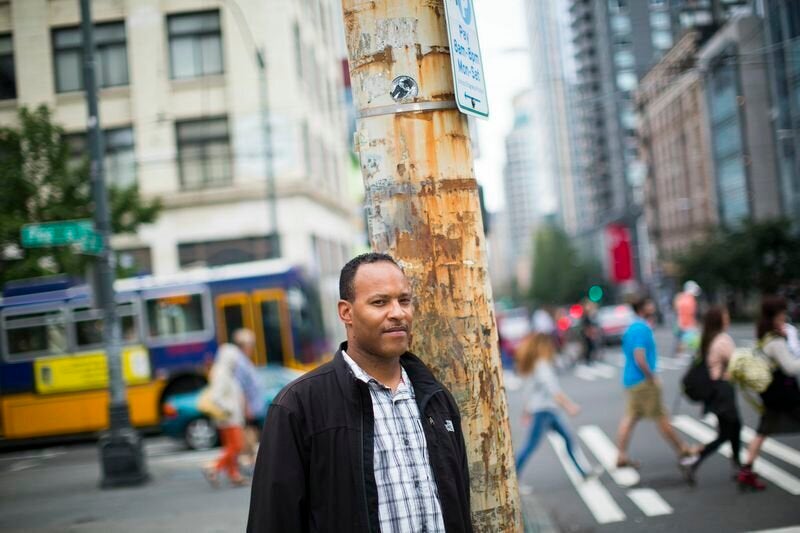
In 1971, Richard Nixon declared drug abuse “America’s public enemy number one.” Over the next three decades, the federal government and most states toughened their drug laws and began spending ever more to put offenders in prison and keep them there. Today, there are neighborhoods where nearly everyone knows people who have been behind bars, and the enforcement of the drug laws across racial lines is so uneven that the United States locks up a higher percentage of black men than South Africa did at the height of apartheid. Drugs are purer and cheaper than they were in the '90s, and the demand for them is overwhelming authorities’ ability to combat the problem. Prison wardens are filling gyms and television rooms with bunk beds. Officials in both parties and at every level of the government complain about the cost of keeping so many people locked up.
In recent years, some states have saved money on prisons by investing more heavily in “drug courts” where judges can order defendants to enroll in treatment programs. Every state in the country has at least a few drug courts; Washington alone has dozens. In the simplest sense, these courts offer people an opportunity to avoid prison, provided they agree to stop using all illegal drugs and go into a treatment program ordered by a judge. Studies suggest that they can help addicted people break their habits. But people with the toughest addictions often drop out or fail to qualify in the first place, and even those who manage to get "clean" still have to live with the permanent stain of a criminal record.
In Seattle’s West Precinct, where Bradford lives, the approach is different. People who get arrested for the sale and possession of crack, heroin and other illegal drugs are no longer automatically thrown in jail and prosecuted. Instead, officers with the Seattle Police Department now have the option of giving these offenders a choice: leave the precinct the old-fashioned way, in handcuffs, or meet with a counselor at a social-service agency and avoid the court system altogether.
Those who choose the second path are no longer offenders, but “clients.” Depending on their needs, they may receive free apartments, clean clothes, college tuition, books for school or even yoga classes. Counselors lead them through a bureaucratic maze, helping them apply for jobs, food stamps, health insurance and other essentials. Private foundations shoulder most of the costs, though the city has begun to chip in, too. All the clients have to do to get into the program is agree to see a counselor at least twice in the first month of signing up. They don’t have to promise to stop using drugs. No one hands them a cup and points them to the bathroom.
The underlying philosophy is known as “harm reduction.” Proponents believe in trying to rein in the secondary effects of drug addiction -- social ills like poverty and homelessness and physical diseases like HIV -- by supporting people who are either unwilling or unable to stop using drugs. The idea has always been controversial, particularly in the United States, with critics arguing that the best way to address addiction is to insist on total abstinence from drugs at every stage of the recovery process. Nevertheless, government-backed programs that practice the principles of harm reduction are spreading throughout the country and the world, in part because the unimpeded growth of the drug trade has made it increasingly difficult for governments to justify the traditional ways of dealing with addiction.
In Canada, Australia, and many European cities, addicts can now get their fixes in legally sanctioned injection rooms under the supervision of nurses who have been trained to protect against overdoses. Syringe exchanges, where people can trade dirty needles for clean ones, have sprung up in most American states and in more than 70 countries. Since 2001, the government of Portugal has treated the possession of a personal supply of drugs as a minor offense on par with a parking violation. When the Cato Institute, a libertarian think tank, looked into the effects of this policy in 2009, it found that fewer kids were using drugs in their teens and that the HIV infection rate among drug users had dropped substantially.
In the United States, police departments in some cities have taken small steps toward reconciling the old-school approach with one that prioritizes the health and safety of drug users. In Washington, D.C., for example, the police chief has ordered officers to comply with a new law that bars them from arresting people who call 911 to report an overdose.
Yet Seattle may be the only city in America where the police have departed so sharply from the status quo. Judith Greene, the director of Justice Strategies, a nonprofit research group that studies criminal justice reform, said she couldn’t think of another example of police arresting people for the purpose of “giving them a pathway to a new life.”
Although it's still too soon to tell whether Seattle's strategy will pay off in the long run, the program, called Law Enforcement Assisted Diversion, or LEAD, is already attracting interest from police departments and prosecutors’ offices around the country. San Francisco, Denver, Atlanta and Houston have all sent representatives to Seattle to take notes, according to the program’s administrators. Santa Fe recently adopted the model for people arrested for heroin and prescription opiates, and Albany, New York, is expected to launch a similar program this year. In Seattle, the effort has already helped dozens of people like Bradford get access to services that can temper the effects of addiction. In a society that still insists on treating drug addicts as criminals, the city is trying to use that criminalization to direct addicted people to services that might actually help them.
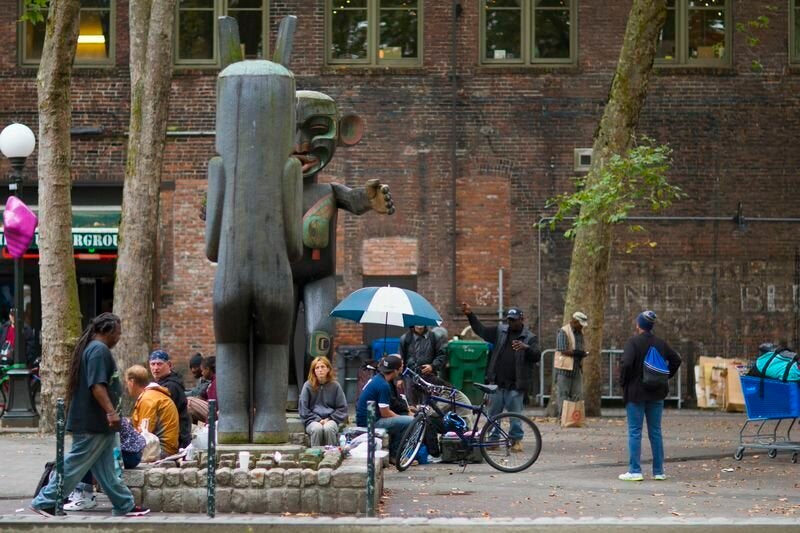
The overgrown lot where the police picked up Bradford lies on the edge of the experiment’s laboratory, a 150-block zone that includes Seattle’s downtown shopping scene and a rapidly gentrifying neighborhood called Belltown. Pike Place Market, an arcade of stalls selling artisanal cheeses and smoked salmon, forms the western border, along the waterfront. To the east, where the out-of-town buses stop, dealers mill around on crowded sidewalks, mumbling the trade words for goods of a different kind -- “black” for heroin and “cream” or “butter” for crack. The discount shops on the southern end may appear legitimate to most people, but on a recent walk down the strip, a shoplifter pointed out a restaurant whose proprietors, she said, operate a sideline fencing goods that addicts have pilfered from neighboring businesses.
Seattle’s downtown drug trade took off after the city’s decline as a manufacturing center in the late 1960s. Between 1968 and the end of 1971, with the nation’s economy in a slump, the Boeing Company laid off thousands of workers. The local unemployment rate hit nearly 15 percent, more than twice the national average. It was around this time that the abandoned shops and warehouses around Pike Place became the hub of a “wide open drug and sex market,” said Kris Nyrop, a program director for LEAD. As the years went by, the police kept arresting many of the same people again and again, but that didn’t make the problem go away. In fact, it may have only made things worse. “I saw too many people get convicted for crack or heroin,” said Nyrop, who ran a syringe exchange in downtown Seattle in the ‘90s. “At that point their life is fucked. They can’t get employment, they can’t get housing. The only world they can live in is the illegal world after that.”
In the last decade, software engineers and designers have staked a claim to this post-industrial turf, paying a premium for the soaring loft ceilings and sparkling views of the sound. But despite the rising rents, the local street dealers have not gone out of business. Scattered among the restaurants and galleries, government-funded housing projects and treatment centers still draw the poor and the addicted. In one cafe, a crowbar hangs from the wall like a battle trophy, a tribute to the barista who supposedly used the tool to fend off a drug-crazed vagrant.
From 2006 to 2010, the commander of the roughly 150 police officers responsible for these streets was a department lifer named Steve Brown. One recent afternoon, Brown sat down for an interview at the office of a public defender, a longtime nemesis of the department who still arouses so much contempt among some of its members that another cop recently went so far as to describe her as “the devil.”
As Brown spoke, he shot some hand sanitizer into his palms, rubbed them together, and then used a folded tissue to wipe up a drop that had landed on the table. This meticulous official did not seem like the sort of person who would choose to become a revolutionary. And yet, through his unlikely alliance with “the devil,” he’d arguably become one.
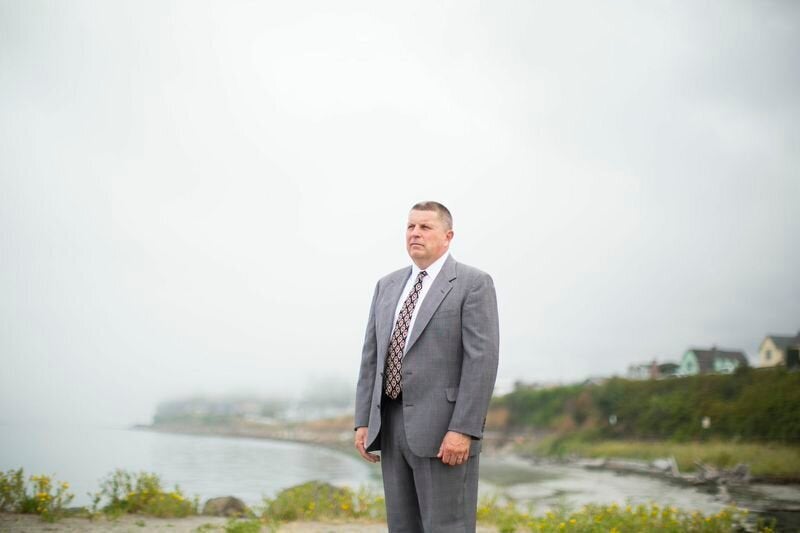
Brown’s tenure as a police officer began in 1980, just as the growth of the American prison population was beginning to accelerate. Over the years, as his rank rose, so did the department’s arrest rate. In the lawyer’s office, he recounted his rise without flair, responding to several questions with a gentle “my goodness.” But when he spoke of his stint as an undercover narcotics agent during the crack boom of the 1980s, a hint of the proud warrior crept into his voice. “We closed down crack houses, we put people in jail and we cleaned up neighborhoods,” he said. “And that was a pretty good feeling.”
In 2001, Brown became captain of the department’s narcotics unit. This personal milestone marked the beginning of a difficult time for the force. Lisa Daugaard, now the deputy director of the county’s public defense department, was then the head of a special unit of attorneys and researchers at the Public Defender Association, a nonprofit firm that represented indigent defendants. In Brown’s first year as captain, Daugaard filed the first of two motions accusing the police of targeting black people in drug arrests. In Seattle, a city where less than a tenth of the population is black, African-Americans made up nearly two-thirds of the suspects who were arrested for drug crimes that year, despite evidence from Daugaard's organization and the American Civil Liberties Union showing that they were no more likely to use or sell drugs than anyone else. Under pressure from a judge, the cops submitted to hours of questioning by Daugaard and her colleagues. Brown took the probing “very personally,” he said, sitting across the table from his longtime adversary. “I don’t go to work thinking I’m going to violate somebody’s civil rights. That is insanity.”
Now retired at the early age of 57, Brown, an avid fisherman, looks lean and fit from his battles with the salmon of Puget Sound. But his department headshot, taken at the time of his battles with Daugaard, shows a much heavier man. The fight sapped his energy and caused him to neglect his health, he said. It also compelled him to question his “whole philosophy” of drug enforcement -- a philosophy he’d practiced faithfully over the course of his career. “There’s a huge cost to putting people in jail,” he said, “and what do you get at the end?” The more he thought about how to defend his approach, the less sure he felt it was worth defending. When his two young boys told him they wanted to grow up to be cops, he encouraged them to join the fire department instead.
By 2005, the police were tired -- tired of dealing with Daugaard and her team, and tired of spending a fortune on lawyers. Begrudgingly, Brown and several other law enforcement heads agreed to meet with Daugaard outside of the courtroom. As Daugaard recalls it, Brown told her at that meeting that the police did not see themselves as racist and would never respect anyone who implied that they were. He claimed that if his officers were arresting more black people for drug dealing, that was because more black people were dealing drugs on their streets. Still, he let Daugaard know that if she had a better idea for how to handle the drug problem, he was ready to listen.
Daugaard remembers feeling taken aback. Until that moment, she and her staff had never thought about what it would actually take to solve the issue they had spent years decrying in court. “We were against something,” she said. “But we were not for anything.” Like many of her clients, Daugaard had been arrested dozens of times -- not for drugs, but for acts of civil disobedience. She had grown up in the sort of progressive white household in Seattle where Malcolm X was quoted at the dinner table, and she’d organized protests against South African apartheid as a Cornell student in the ‘80s. She considered herself a supporter of the movement to end the prohibition of drugs, but as she thought over Brown’s challenge, she decided it wouldn’t do any good to hold out hope for something so ambitious, even in a state that would legalize marijuana less than a decade later. She had long believed that her job as an activist lawyer was to “fight everyone in a uniform,” she said. Now she was beginning to realize that if she wanted to make a difference in the lives of the people she represented, she would have to find a way to get the cops on her side.
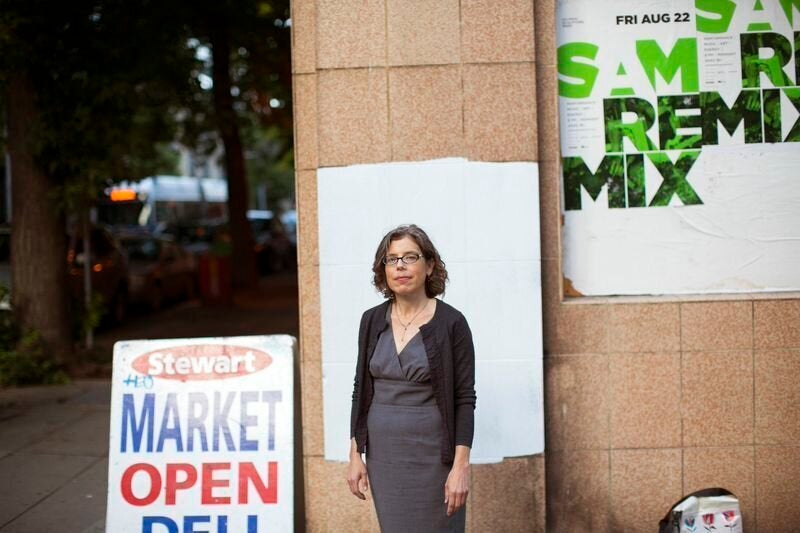
Bradford, who is 45, first tried cocaine at 29 and quickly became the type of guy who was always slipping into the men’s rooms at nightclubs. He missed the soldier’s life, he said -- the wild parties in Thailand and the Philippines, the gun battles off the coast of Kuwait, the comfort of knowing that your friends always had your back.
One night, he took a hit of cocaine residue from a pot pipe that his drug dealer had used to smoke crack. “We call that the ‘caviar,’” he said. “It’s the most potent form of the drug. And that’s when the demise pretty much started.”
Crack is much cheaper than powder cocaine. Bradford could afford to stay high all weekend and share the supply with his friends. The party lasted about six months before things began to unravel. First, his boss at the department store caught him napping in a back room and let him go; then Bradford stopped paying rent and lost his apartment. He began selling crack here and there to support his habit, and connected shoplifters with buyers, using the sales tricks and conversational skills he’d cultivated on the floor of the menswear department. In 2007, he discovered that one of his friends from the drug world was pregnant with his child. Less than a year after his daughter was born, he said, a fire broke out in the hotel room where the mother and child were staying. The state briefly took custody of the infant girl, and then Bradford’s mother and stepfather adopted her. Bradford would visit now and then, but it was his stepfather who brought the girl to her first gymnastics lessons, who taught her how to ride a bike. The girl still calls Bradford’s stepfather “Dad.”
“It hurts every time I hear it,” Bradford said.

A desire to be a better father played a part in Bradford’s decision to give the LEAD program a try. One morning in September of 2011, he and his friends were getting high in that spot beneath the freeway when they heard footsteps coming down the trail. They looked up to see a pair of cops step out into the clearing. Bradford quickly tossed a packet of crack into the bushes, but the cops weren’t there to search anyone. Victor Maes, an officer with flecks of grey in his mustache and almost three decades of policing under his belt, began telling the group about an unusual experiment designed to help them.
Bradford had been in rehab programs before. By now, he’d given up hope that any program would ever cure him of his dependence on drugs. Still, he couldn’t deny the appeal of clean clothes and a free apartment. All he had to do was give the cops a reason to arrest him one more time. Back then, in the early days of the experiment, the administrators were so overwhelmed by the logistical demands of the program that they only allowed the caseworkers to accept clients who were facing jail or prison. And so, as Maes spoke, Bradford did something he could never have imagined doing before: He showed the cop his pipe, held out his wrists, and asked to be arrested. (Three years later, the cops can refer people into the program without snapping a pair of handcuffs on them first.)
The police say they thought of Bradford as a "frequent flier," one of several hundred people who had logged some serious miles on their trips from the streets of downtown Seattle to the King County Jail. But on that morning in the fall of 2011, Bradford’s journey into the criminal justice system ended at the police station. Sitting in a private room with a social worker, Tim Candela, Bradford said he wanted to help raise his daughter, then 3. He also wanted an apartment and a job, but he had no intention of giving up drugs. Candela didn’t argue. Bradford left the station, took out his phone and called his dealer.
Over the next few months, Candela got Bradford into a homeless shelter, and then helped him restore his driver’s license, which the state had suspended after a few friends borrowed his car and abandoned it in the street. After a few meetings, Bradford said he wanted help with his addiction after all. Candela wasn’t surprised. “Everyone has goals,” said Candela, who serves 30 clients currently enrolled in the LEAD program. “I guarantee once you work toward those goals and a couple things come to fruition, you’ll come back and say ‘I want to deal with my addiction.’ And it’s a lot more meaningful than if I say, ‘You need assistance.’”
After Brown challenged Daugaard to come up with a better strategy for handling the drug problem, Daugaard and her colleagues began talking with civil rights advocates and leaders in the city's black community. Within weeks, Daugaard and her team had settled on the basic concept of replacing jail time with human services. But the idea didn't catch on with the cops right away. It took three more years, another round of court battles, and a series of tense meetings at a coffee shop across the street from Daugaard’s office before Daugaard convinced Brown to take a chance on her proposal.
“There was a certain amount of risk involved,” Brown said. He didn’t look forward to telling his sergeants that he’d come to terms with the woman who had slammed them in court, and he worried about letting suspected felons walk free without even a charge. Daugaard, sensing his nervousness, advised him at one of their coffee sessions to avoid watching HBO’s “The Wire.” She couldn’t help but notice the similarities between Brown and Howard “Bunny” Colvin, a police commander who decriminalizes drugs in a Baltimore neighborhood and ends up leaving the force to work at a hotel.
Meanwhile, the need for a solution was growing. About a month after Brown and Daugaard began their talks, more than 100 people -- mostly from gentrifying Belltown -- confronted Brown and the county prosecutor at a town hall meeting over what some residents were calling “the drug bazaar.” Dealers were doing business in broad daylight, they said. Addicts were roaming the streets at all hours, stealing from stores and breaking into cars. Why weren't the cops doing anything about it?
Brown insisted the department was doing all it could. Then Daugaard walked up to the podium and, as she remembers it, took a deep breath. Seeing an opportunity to press her case to the affluent crowd, she outlined the plan she’d been pitching to Brown. Several people in the audience spoke up in support. Afterwards, residents lined up to ask questions. Brown quietly took note.
By the end of the next year, Daugaard had secured $1 million in financing from philanthropic groups that support criminal justice reform, including the Ford Foundation, Open Society Foundations, and the smaller RiverStyx Foundation and Vital Projects Fund. The city’s liberal mayor, the county’s Republican prosecutor, and a variety of other local leaders had all signed off on the project.
Brown ended up agreeing to all of Daugaard’s suggestions, meaning the cops would offer the program to people arrested not only for possession, but also for street-level dealing and prostitution. After years of dreading his encounters with Daugaard, Brown was beginning to respect her. “Attorneys sue,” he said. “That’s what they do. But she went from attacking us to saying, ‘I want to work with you.’ It was legitimate, sincere, and I thought, ‘We can do this. We can try it.’”
The first participants signed up in the fall of 2011. Over the next 2 1/2 years, the police recruited a total of 179 people, according to data provided by the program. Of those 179, about 150 people were homeless when they started. But as of the beginning of this year, at least 120 of those 150 had moved into an apartment, motel or some other type of shelter. More than half of the 179 initial enrollees have received help applying for public benefits, and nearly as many have sought treatment for their addictions. According to the data, almost everyone who was offered the opportunity to enroll in the program accepted it.
A more detailed evaluation of the program’s efficacy won’t be completed until April 2015 at the earliest. But Jim Pugel, a former Seattle Police Department chief who helped start the program as an assistant, said he knew “right off the bat” that the experiment would save taxpayers money on jail fees and prosecution costs. People who are charged with drug crimes in Seattle spend three weeks in jail on average, according to an analysis by the county government. That costs the county around $3,000 at the cheapest -- or about 50 percent more than a month’s rent at a newly renovated one-bedroom apartment just down the road.
Local residents say they’ve seen less drug activity on the streets in the last few years, and while it’s hard to know whether LEAD deserves the credit, Liz Campbell, the head of the Belltown Community Council, said the experiment has won over many in the neighborhood. Residents now feel more of “a sense of control” over the drug problem, she said, and they take pride in the apparent signs of progress.
As popular as the program may be in Belltown, it’s impossible not to wonder whether the experiment can succeed in less progressive places. Maybe it can. The country as a whole has never been more sympathetic to the idea of treating drug users as people who require support, not punishment: Polls show that Americans across the political spectrum favor treatment over prosecution as a response to drug use, and liberals and conservatives have come together in a Congress defined by partisan gridlock to draft legislation that would lighten the penalties for drug crimes. In an unprecedented rhetorical move for a president in the drug war era, Barack Obama has begun to talk about addiction as a public health issue, not a crime.
Still, the White House continues to spend billions on drug control, with more than a third of that money going to traditional policing, and the Drug Enforcement Administration and other law enforcement groups have bridled at the talk of reform. In April, after Obama defended the administration’s decision to accept the legalization of marijuana in Washington and Colorado, Michele Leonhart, the head of the DEA, declared that her agents would not back down from the war on drugs. "Actually, it makes us fight harder," she said.
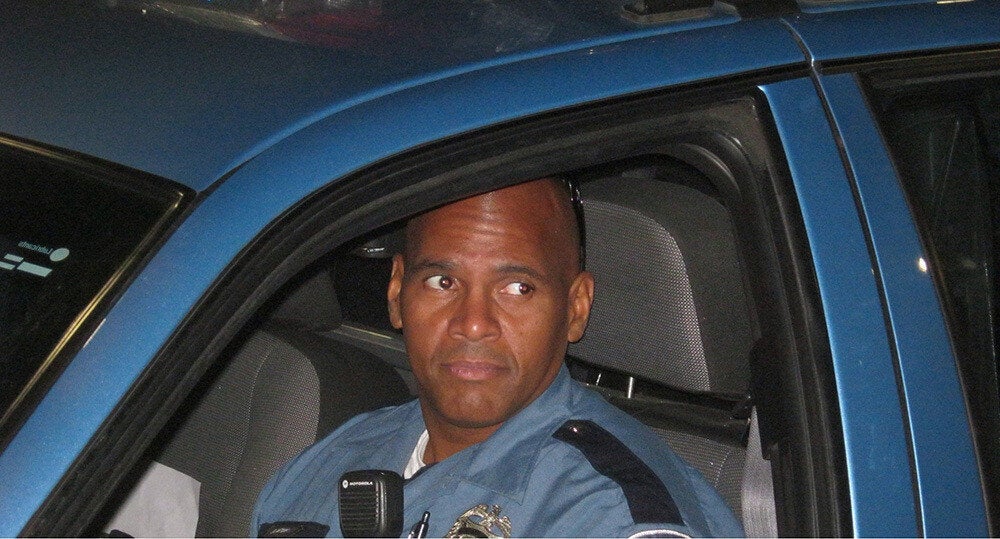
Back in 2010, the cops in Seattle’s West Precinct were generally skeptical when they learned about the department’s new rules of engagement, according to the officers and commanders interviewed for this article. Some still are. And since they aren’t required to offer the program to every person they arrest, offenders aren’t always presented with an alternative to jail. “It’s up to the cops in that moment,” said Felix Reyes, an officer who works in Belltown. “We’ll offer it if we’re moved to, and we won’t if we’re not.”
Reyes, who came to Seattle in 1992 by way of New York City’s East Harlem, said he thinks the program is too soft on dealers. As a young man, he watched drugs rip apart his family, he said. One of his sisters was addicted to crack, and Reyes ended up raising her children. Reyes said another sister was murdered by her boyfriend, a cocaine dealer and addict who then committed suicide, and the third died after contracting HIV from a man who was hooked on heroin. As Reyes sees it, people who profit from drugs deserve incarceration, not counseling. “I think drug enforcement should be black and white,” he said.
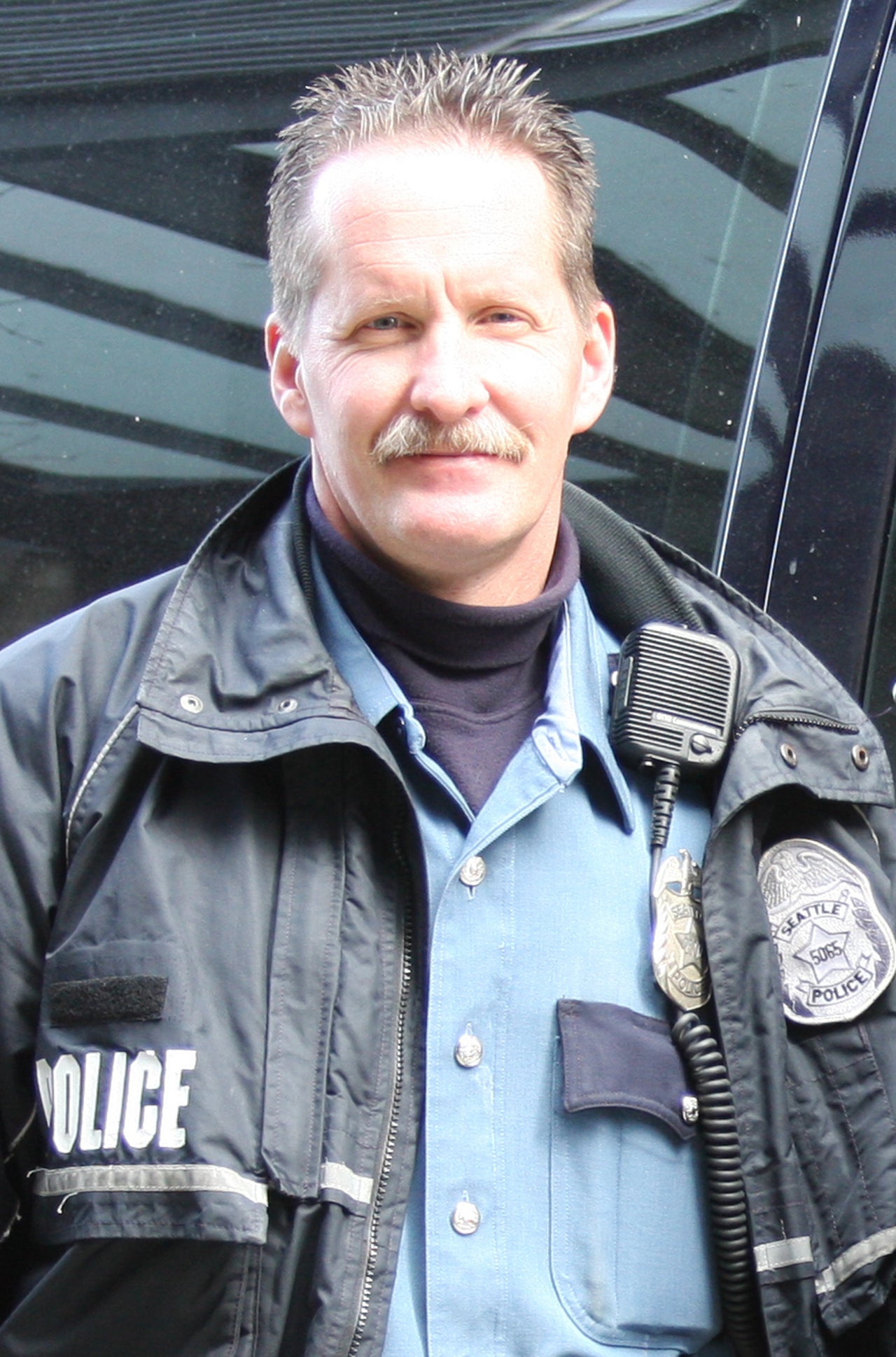
Maes, the veteran officer who brought in Bradford, offered another perspective. “I see change in some people, and I see some struggling,” he said. He first started thinking the program might actually work after he realized he’d stopped seeing two particular routine offenders around the neighborhood. “These two guys were out constantly every day, smoking cocaine, wheeling, dealing, facilitating deals, assisting others to get the dope, shoplifting, scamming people for money, pickpocketing,” he said. “Every time we’d go out at 3, 4 in the morning, there they were, and when we were getting off a shift at 6, 7:00, there they were.”
And then they weren’t. The pair joined the LEAD program and checked into treatment centers in early 2012. A few months later, one of the men came by the precinct to show Maes his wallet. “He says, ‘I got $100 in here, and I haven’t bought rock.’” Then the man showed Maes a picture of his family.
The reality is that the program is working for some people, but life in the West Precinct isn’t all “unicorns and rainbows,” as one caseworker put it. If a week in May was any indication, the cops still spend most of their time arresting people and putting them in jail. Some arrests take place just outside the program’s geographic borders, and some involve former LEAD clients who have stopped meeting with their caseworkers. At the precinct this spring, a hysterical man asked the cops for a pair of gloves, saying worms were crawling out of his fingers. The cops had caught him selling painkillers in a park that morning. He’d enrolled in LEAD almost two years earlier, but it had been a long time since he’d sat down with his psychiatrist or Candela, his caseworker.
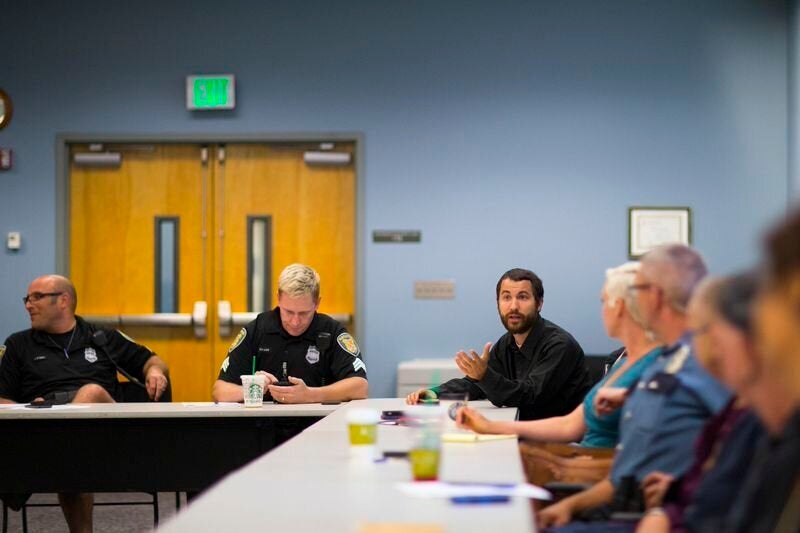
In August 2010, a Seattle cop shot and killed a homeless Native American woodcarver who was crossing the street against the light while holding a pocket knife and a piece of wood. The U.S. Department of Justice opened an investigation into the Seattle Police Department's use of force and allegations of racially biased policing.
Daugaard provided the feds with the data she and her colleagues had unearthed during their own investigations, but she also told them about the progressive shift that had already begun to take place in the West Precinct under Brown. She hoped to convince them to at least acknowledge the changes that Brown and others in the department had made.
This time, the lawyer's powers of persuasion fell short. In December 2011, the DOJ investigators announced that they'd identified a pattern of excessive force among Seattle’s officers, and suggested that racial bias may have indeed played a role in how that force was meted out. Yet they made no mention of the department’s unusual reform effort.
Brown retired soon after, saying he was frustrated by the federal government’s “heavy-handed” management of its relationship with the department. At the coffee shop where he and Daugaard had met to work out the details of the LEAD experiment, Daugaard gave him a box set of “The Wire” as a parting gift.
In January, a new mayor, Ed Murray, arrived at Seattle City Hall and overhauled the police command. Although Murray describes himself as a progressive, the shakeup led some in the department to wonder whether LEAD would survive under the new regime. So far it has. In May, Murray's administration approved a plan to expand the program to another part of Seattle, an $800,000, city-funded undertaking. That same month, Murray picked former Boston Police Commissioner Kathleen O’Toole to take over the force. At her confirmation hearing, O’Toole lauded the LEAD program’s “national reputation” and said she’d look into how to “add to those efforts.”
Bradford, the former Marine who had nearly given up hope of winning the hardest battle of his life, has survived, too. One afternoon this spring, he parked his bike outside a Starbucks a few blocks from the lot where he used to sleep. Sitting on a stool by the window, he took out a picture of a little girl in a pink dress, her bright eyes shining up at the camera. “I see her more now,” he said. “I never wanted to see her when I was high. I didn’t want her to see me that way.”
Since the start of this year, Bradford has been living in a shelter for recovering addicts where Candela helped him find a bed. In August, he said he’d been sober for eight months, his longest stretch without drugs in more than a decade. Mornings are spent in support groups and addiction classes, he said, and afternoons are dedicated to shopping and cooking for his housemates. He recently landed a part-time job as a line cook at the Hard Rock Cafe. And he calls or sees Candela every other day.
“I don’t have to,” he pointed out. “But I’ve made it a habit.”
